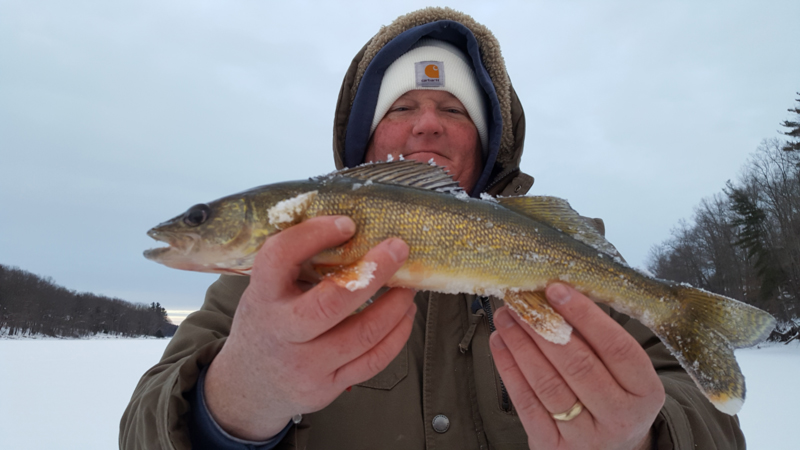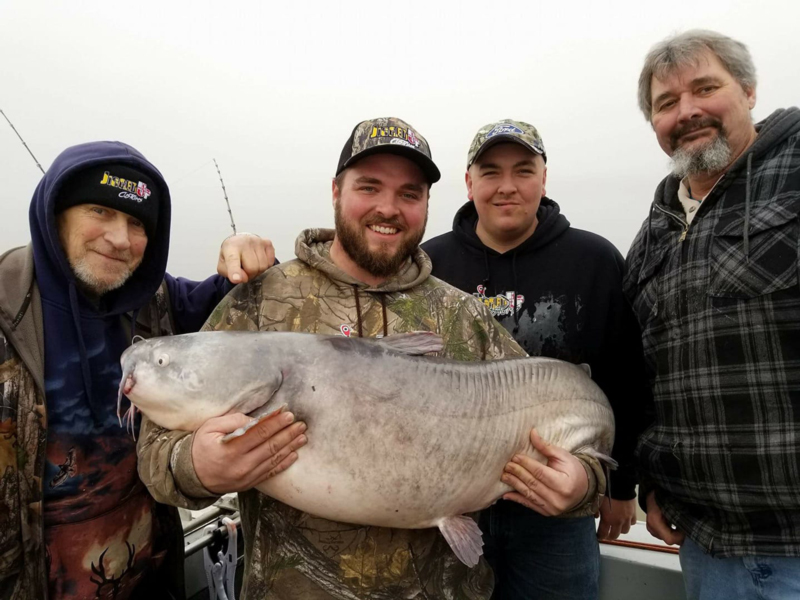For timely, up-to-date fishing intel, visit our Fishing Reports pages. Current reports will be published every Friday by noon — just in time for your weekend fishing adventures. For the long view over this next month, however, here's what's likely on the horizon.

Coastal
The options may have dwindled for coastal anglers, but January always has one good bet: tautog on the wrecks and reefs. All along the coast dropping crab baits tight to the structure can produce bites when the weather is good enough to push out through the inlet. As for the inlets themselves (as well as inshore structure like the CBBT) there may be some tog still biting as this month begins but it’s all depending on the water temps; once they drop into the mid-40s you can expect the bite to slow and then cease altogether. Scup are also a possibility on the wrecks and reefs, and if the weather and the fish decide to play nice there’s also a chance of stripers inside the three-mile limit.
Freshwater
Please don’t freeze… please... please… Or if it does freeze, could we order up an arctic blast that generates three or more inches of hard water? This is the month when many Mid-Atlantic anglers who fish all year round dread the prospect of a solid ice barrier keeping them firmly separated from the bass, crappie, walleye, and pickerel. But on the flip side of the coin, if it freezes up and freezes up hard this is also the month when we may get a week or three of safe ice on the western lakes. Who’s ready to start drilling holes and rigging tip-ups? Remember, three inches of solid (clear) ice is the bare minimum for ice fishing and if the ice is cloudy (thanks to air bubbles) you need four inches. Check out Cheap and Easy Ice Fishing to get the scoop on how you can painlessly (referring to the cost here, not the subfreezing temperatures) gear up and give it a shot.
Way North
Who up this way has ever heard of Perryville? Truth be told just about any of the deep-water holes and haunts in the lower Susquehanna could be holding yellow neds. Last year we didn’t see a good bite crank up until later in the month but every season is different, so stay tuned. Meanwhile, if you want a bigger bend in the rod try dropping some cut fish of any old variety (or chicken breast, hot dog chunks, night crawlers, chicken livers, and the list goes on and on…) to the bottom and wait for the catfish to show up. They’ll keep munching right through the winter.
Upper Bay
Just as long as the tribs don’t freeze up Upper Bay anglers will have a few options this month. Yellow perch and pickerel on darts with minnow are the normal fare, and if past predicts the present, the Magothy and Chester will provide the highlights. Considering how extensive the catfish population has become north of the Bay Bridge, it’s a fair bet you can target the whiskered critters throughout the area this month, too.
Middle Bay
Middle Bay anglers who haven’t shifted their attention inland to freshwater will have a few fish to play with in the tribs, though this action is generally better on the eastern side of the Bay Bridge than it is on the Western Shore. That said, the Severn should see some decent pickerel action as well as a few perch this month. Anglers with non-winterized trailer boats will surely have their eyes on Calvert Cliffs as well, where fishing the warm water discharge should present some catch-and-release action (assuming it’s still legal when this edition hits the streets).
Lower Bay
In this zone of the Bay, being on the Western Shore for winter is a good thing. Last year the winter was plugged solid with reports of catfish — big catfish — being caught throughout the tribs, particularly the Potomac, Rappahannock, and James. You know the drill: get some cut bait like bunker or gizzard shad or a similarly stinky fish-or-fowl material, find a hole or channel edge preferably with some structure, and put your baits on bottom until a rod bends over. In the creeks, meanwhile, it should be possible to locate yellow perch as they begin balling up in holes downriver of the spawning areas.

One other interesting possibility: last January there was surprisingly solid rockfish catch-and-release action mid-month off the mouth of the Potomac, including a handful of trophy-sized fish. Keep your eyes out for that to happen again if you’re interested in jigging up a winter monster.
Tangier, Pocomoke, and Lower Shore
The tribs off the sounds provide one of the most reliable winter fisheries around, for a mix of bass, crappie, pickerel, and perch. The upper Pocomoke is always a highlight (call for a bridge opening and fish upstream of Snow Hill for a serious treat), and the Nanticoke and Wicomico will account for plenty of fish, too. Come with a full minnow bucket to maximize the action.
Way South and VA
Expect this to be a month of change in the southernmost portions of the Bay. At the beginning of January tog may still be worth a shot at the CBBT, but as water temps drop into the mid-40s this bite will taper off and end. Last season that happened mid-month, but of course there’s no telling when it’ll happen this year. Slot stripers outside of the Bay demarcation line are another possibility, assuming the powers that be don’t pull a last-minute switch in the regs.
One more thing is on our minds: you may recall that last February there was a handful of early redfish caught in the lower Elizabeth River, Willoughby Bay, and Rudee (mostly on shrimp). Those reports picked up quite a bit as March began with one of the earliest bites many anglers could remember. Now, we’re just thinking out loud here. But if we get a significant winter warm-up at pretty much any point, it stands to reason that the fish that stuck around rather than heading south for the winter may decide to grab a bite to eat. It also stands to reason that if a warm-up does come, at least one bold angler will go out there and find out for sure. Who will it be…?